How to Do Drawing Exercises and Warm Up Sketching
These easy drawing exercises should be done daily. Or at the very least, before you begin doing a more structured drawing. There are many benefits to warming up with drawing exercises or warm up sketches.
For starters, warming up with drawing exercises loosens the muscles. It’s very similar to what athletes do. Ok, maybe a little different. You’re not likely to strain or injure a muscle drawing if you don’t warm up first. But it does help in getting your muscles ready to work.
And it helps you mentally prepare to start drawing. After all of the stresses of the day and the world, we often look for ways to unwind or relax. For many of you this means sitting down to draw.
But then you just sit there and stare at the blank piece of paper. Sound familiar?
We’ll there’s good news. Starting with some warm up exercises will help to ease you into the drawing process. And it will help you activate the right side of your brain.
When learning how to draw, or just get better at it, there are a lot of different things you can do to help yourself out. Warm up sketching is just one of them, but it’s a crucial part of improving your drawing skills. Without warming up, you take the risk of your lines being shaky. And possibly the feeling of intimidation when getting started.
The best part about doing these types of sketches is that they are extremely quick, and they force you to look at what you are drawing. And as I’ve stated many times before, learning to draw is really about learning to see.
* Some of the links in this post may be affiliate links. This means I receive small commissions for purchases made through these links at no extra cost to you. You can read the full disclosure at the bottom of the page.
How to Do Warm up Sketching
All you really need is some paper and a pencil or pen. Alternatively, you could use a paint brush and some paint if you wanted to. A big Sharpie marker is another good option. I’d recommend you try out different types of pencils, pens, and markers.
The best way to do warm up sketching, in my opinion, is on scrap paper. There’s a big advantage to using scrap paper. It takes the pressure away because you already know that nobody will see it.
It’s cheap, so you don’t have to worry about making the most of it like you might if you were using a sketch book or more expensive paper.
There really aren’t any rules or guidelines for doing these drawing exercises. For the best results, you should try drawing from life though. And typically, warm ups will be very short duration. An entire warm up session might last only 3 to 5 minutes.
You’re the boss though. Use these easy drawing exercises in whatever way you feel they benefit you most.
7 Drawing Exercises Anyone Can Do
- Contour drawing
- Blind Contour drawing
- Gesture drawing
- Scribble drawing
- Loops
- Doodles
- Shapes and Form
Download your free guide to starting Your Art Journey
So let’s talk about the different types of drawing exercises you could do to get yourself warmed up, and what they are. There are many more options as well. So feel free to add in some of your own.
Contour Drawing Exercises
Contour is French for outline. The contour drawing is the outline of an object and is the simplest form of art.
When doing contour drawings, you eliminate shading and other details. Your focus is only on the outline of the object you are drawing.
There are different techniques for doing contour drawings. Let’s look at what those are.
Continuous Line Contour Drawing
Your contour drawing can be a continuous line, where you keep your pencil on the paper and don’t lift it up. This method creates a very loose type of drawing, but you’ll be able to get some fairly accurate depictions of what it is you’re drawing.
Since you’re not lifting your pencil off of the paper, you’ll be required to retrace some of your previous lines. This isn’t a bad thing. It adds to the charm of the contour drawing.
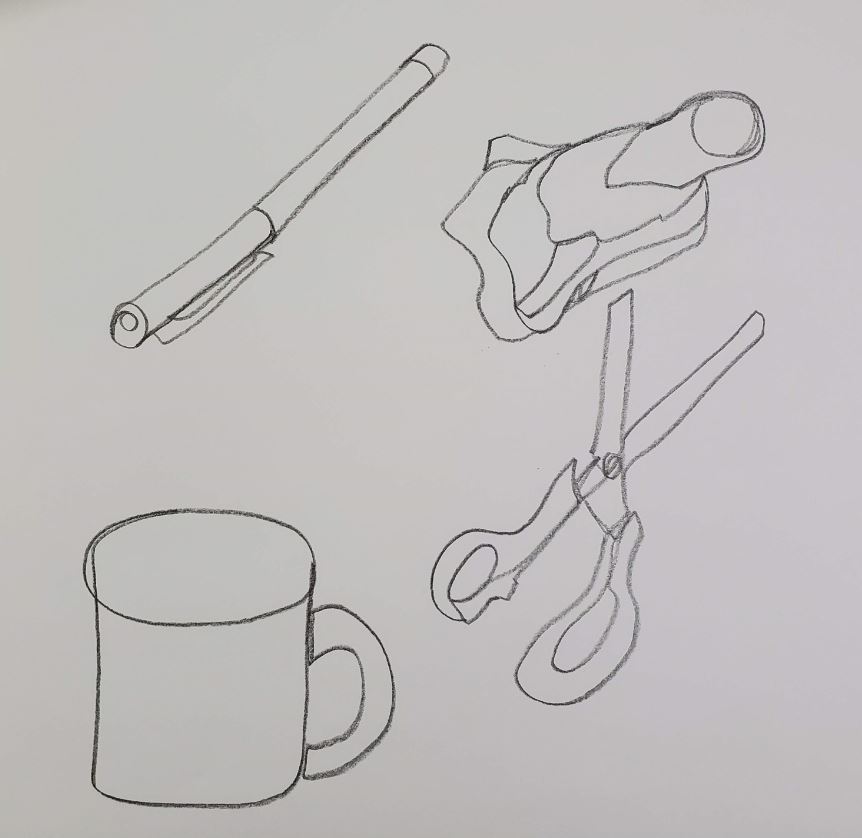
The best way to do contour drawings is by choosing random objects around the house. Don’t worry about how complicated the object is. Since it’s not going to be perfect anyway.
Broken Line Contour Drawing
You could also do your contour drawings using the broken line technique. This means you will lift your pencil from the paper and relocate it as needed to complete your drawing.
To make a contour drawing more interesting, you could use line weight to bring attention to certain areas of your drawing. Typically, this is done by flattening out part of your pencil tip and rotating your lead on the paper to use that flattened out spot when you draw areas you want thicker.
This will help your drawing look more interesting. You can use the thicker lines to show depth and shadows.
In this example, you can see where the lines are thicker and darker between the fingers.
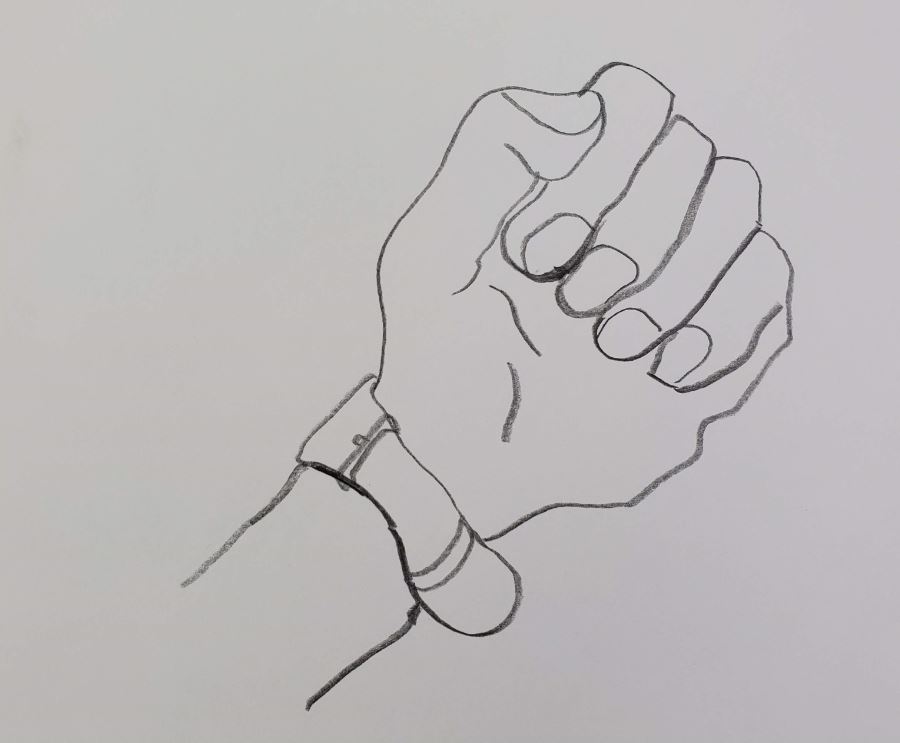
Contour drawing is a great way to force yourself to really look at what you are drawing. The main objective is to capture the essence of your subject. Your finished drawing can be anything from a quick warm up sketch to a complete work of art. It really just depends on how much time you want to spend on it.
Blind Contour Drawing
This is a good way to work on your hand-eye coordination. When doing a blind contour drawing, you are focused on what you are seeing and not what you think you see. Blind contour is very similar to contour drawing. The only difference between the two is that with blind contour you don’t look at your paper.
To do a blind contour drawing, you slowly draw a continuous line without looking at your paper. This forces you to draw what you are actually seeing. You never lift your pencil off of the paper. You focus on the subject you are drawing.
Let your eyes follow the edges of the shape while your pencil is moving on the paper. You have to trust your hand to go where you want it to go.
Blind contour drawing is useful when drawing objects that are moving. Since you are not looking back and forth from the subject to your paper, you are able to pay closer attention to the object and really capture its form.
Your drawing might not turn out looking exactly like the subject you are drawing. But you shouldn’t expect it to. After all, you’re not even looking at your paper.
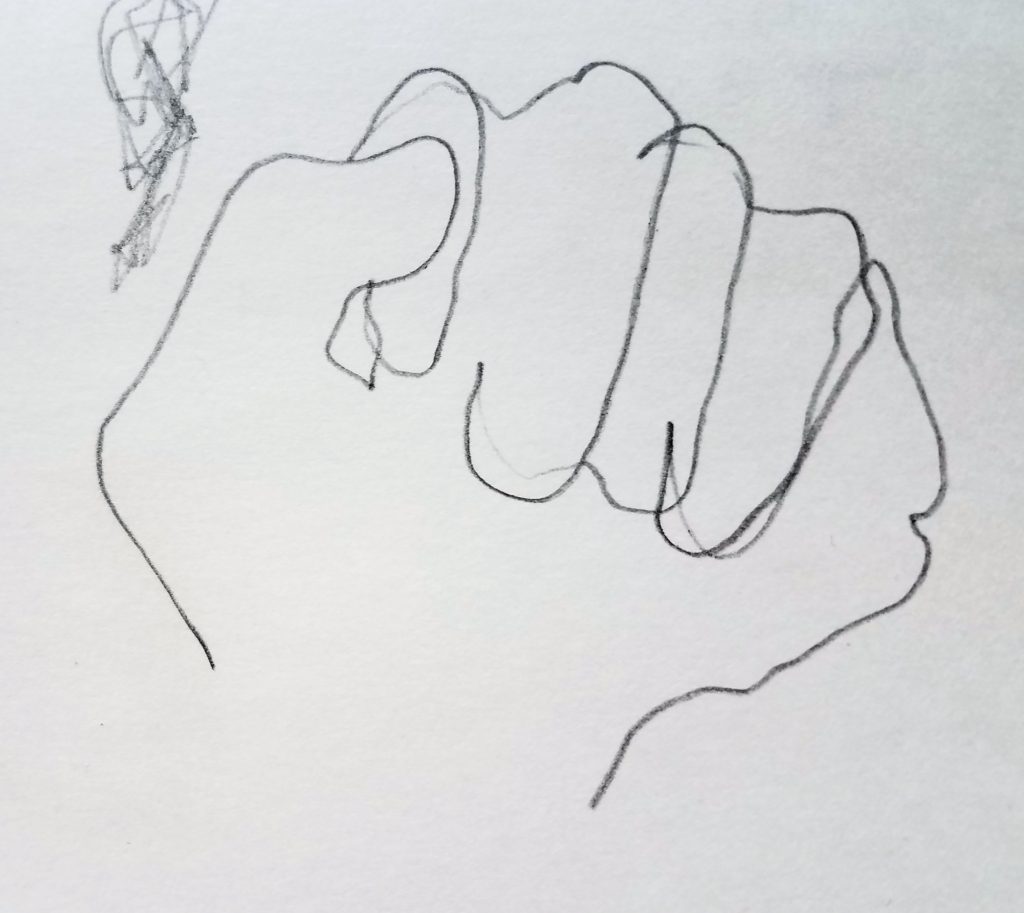
We have a full lesson on continuous line portraits if you want to learn more about this technique.
Gesture Drawing
With gesture drawing, you are trying to capture an action or a mood. This type of drawing can be done as quickly as only a few seconds, and as long as 5 minutes or more. Your drawings can range anywhere from realistic to extremely exaggerated.
You would typically do your drawings from life, studying the human form. When doing gesture drawing, you want smooth, mostly curved, lines. The purpose is to study the human form in motion. With this type of drawing, you are trying to get your hand to draw what your brain has already seen.
Gesture drawings of animals are fun as well. A day at the zoo could result in some really great drawings. Or maybe go the mall where there are lots of people walking around.
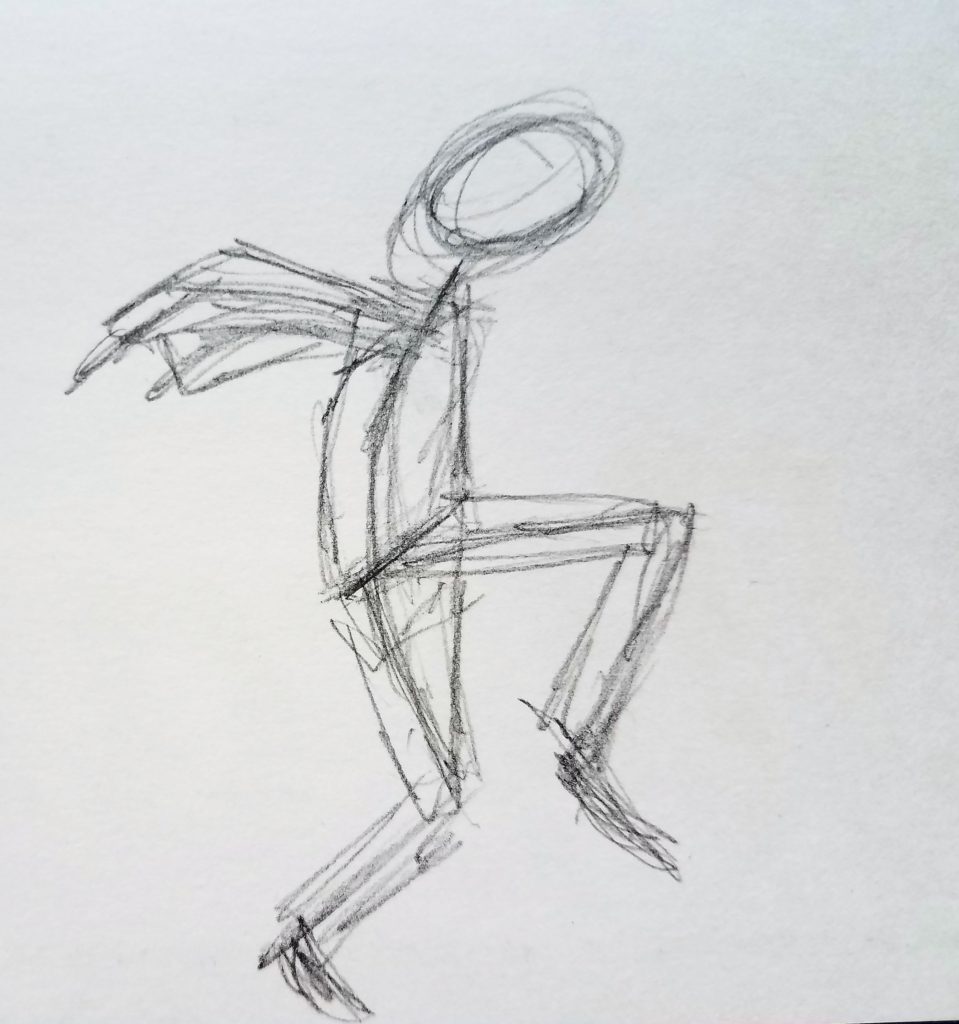
Scribble Drawing Exercise
Scribble drawing is similar to doing a contour drawing, but you continue past the contour and add some shading. With scribble drawing, like with contour drawing, you keep your pencil on the paper without lifting it up. But with this type of drawing you’re pencil moves in a scribble type movement.
Begin by establishing where your starting point is, and keep working your way around the drawing. Start with a gesture drawing, then add in the details. Keep your pencil on the paper and continue working until you are satisfied with your results. For areas you want darker, just add more scribbles.
You can pretty much use any subject matter for scribble drawing. There are a lot of really cool works of art that use the scribble technique. It is a great way to convey emotion in your art.
For help getting started take a look at our lesson on how to do scribble drawing.
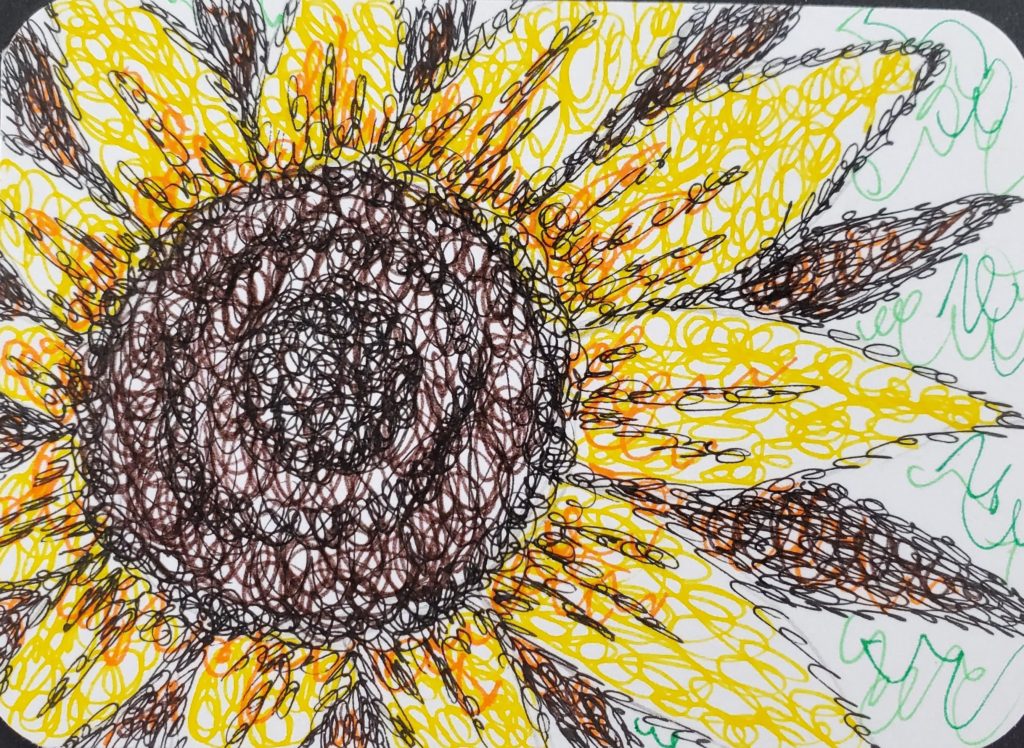
Loops
Loops are exactly what they sound like. This is similar to the scribble drawing, but with slightly less purpose. You literally make a series of loops on your paper. The only thing you need to worry about with this type of warm up exercise, is to make sure you are moving from your shoulder and not your wrist.
You can overlap your loops, make them big, or make them small. This is strictly a playful, and fun drawing exercise. When doing your loops, experiment with variation. Make some loops very tight, and close together. Then make some other ones that are more spread apart.

Notice how the loops that are closer together create darker areas in the drawing. This is similar to the concepts taught in scribble drawing.
Doodling
A doodle can be deliberate or completely random. They can also be representative or abstract. Typically, you would want to do your doodle drawings while distracted by something else, to create a non-intentional drawing.
Doodling can have positive effects on memory, and be used as a relaxation technique.
But doodling can also be a great way to get warmed up prior to a drawing session. And that’s what we are focusing on today.
This doodle is a simple repeated pattern of five concentric circles.
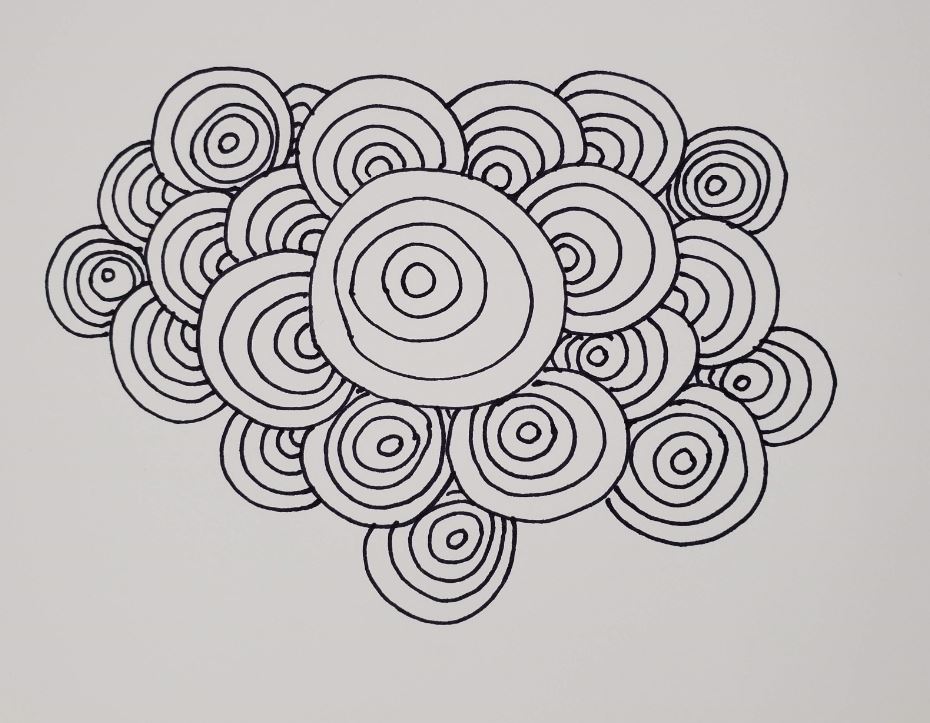
Start with the first set of five circles by drawing the smaller one first. Then draw four more circles that get larger as you move away from the center.
Continue drawing more sets of five concentric circles. Don’t cross over lines. Draw additional circles behind existing ones as necessary.
You’ll find that after drawing a few sets of these circles, you’ll begin to relax quite quickly. This type of doodle is extremely therapeutic.
There are many other ways to do your doodle drawing exercises as well. Like with most of these warm up drawings, there really aren’t any rules to how you go about doing them.
Shapes and Form
This is a drawing exercise that will help you develop your drawing skills. The difference between shape and form is that a shape is two-dimensional. And a form is three-dimensional.
Both shape and form can be geometric or they can be organic. Because forms are more complicated to draw, you will get the most benefit from doing form drawing exercises.
Geometric Forms
Let’s look at geometric forms first. Cubes are probably the most fun to draw. But cylinders can be challenging as well, if you use your imagination.
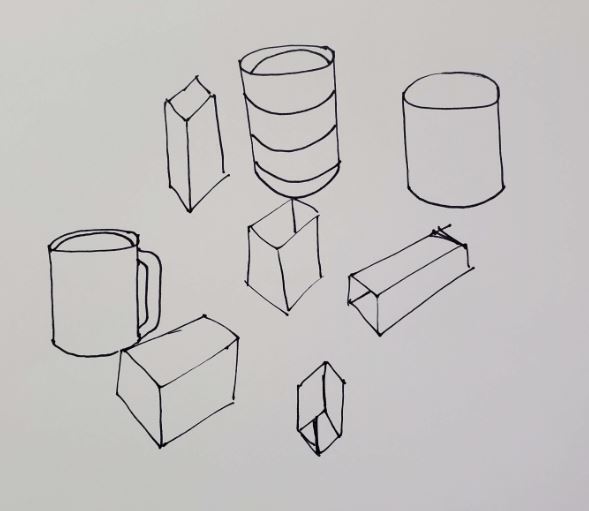
Drawing the inside of some of your forms is a good way to push yourself to the next level. This is a very loose drawing exercise, similar to doodling. You’re not trying to make your drawings perfect, but rather to capture the essence of the form.
Randomly draw various geometric forms on your drawing paper. You should be able to fill an entire sheet of paper in a few minutes.
We have full tutorials on drawing cubes and cylinders, if you need help getting started.
Organic Form
Organic forms are shapes that are wavy and less rigid, and then made three-dimensional using cross contour lines.
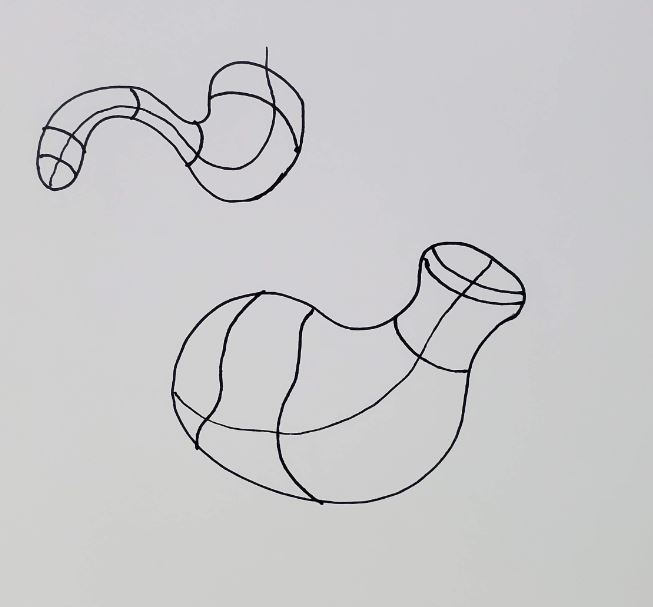
To do this type of drawing exercise, simply fill your paper with random organic shapes. And create a 3D effect by adding cross contour lines to your drawing.
How to Increase the Value of Drawing Exercises
We already looked at the benefits of doing drawing exercises and warm up sketching. But what about ways to get the most bang for your buck? One of the benefits not mentioned earlier is that these easy drawing exercises can actually help you learn to draw.
If you’ve never tried drawing before, or if you’ve been drawing for years, you’ll improve your skills with these types of exercises.
For those of you that have only dreamed of learning how to draw, this is a great place to start. You’ll begin to feel more comfortable when trying to draw. And you’ll have lower expectations for these quick drawing exercises than you would if you were trying something more complex.
Draw New Things
If you’ve been drawing for years you can still benefit from doing quick drawing exercises. Consider drawing things you’ve never been good at drawing.
I’ve been drawing for as long as I can remember, but I’ve never been able to draw cars or bodies. There’s been attempts from time to time, but then I would quickly give up. The reality is that I’ve never put much time or effort into learning how to draw either one.
Are there things you’ve never been good at drawing, but wish you were?
Warm up drawings are a great opportunity to practice drawing anything you’re not good at. There’s no pressure of needing good results, and they don’t take up much of your time. Any efforts towards practicing something you can’t draw will result in some type of improvement.
Get the most from warm ups. Work on things you can’t draw well. Things you never let yourself practice because you know it’s not going to turn out the way you want it to. It really doesn’t matter what you draw when you’re warming up, just draw something. Get your muscles, and your mind, moving.
You’ll be amazed at how quickly you’ll start to relax and enjoy your drawing session.
How to Do Drawing Exercises and Warm Up Sketching
For more ideas on drawing exercises, check out Keys to Drawing with Imagination by Bert Dodson. I’ve had this book for years and I still love the creativity exercises he teaches in the book.
And when you’re ready to take things to the next level, doing an art challenge is a great way to get started.

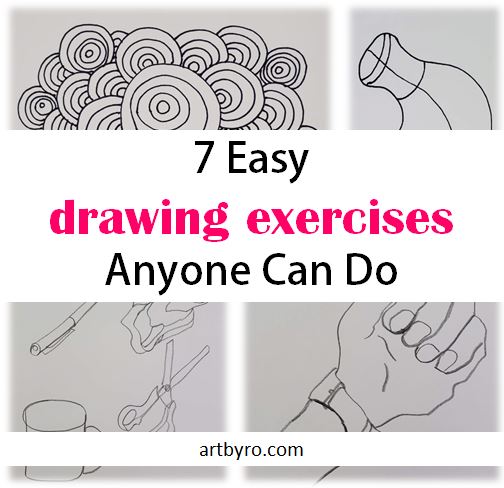

There’s no freebie!
When you sign up for the freebie it will get emailed to you. From there you can download it and print it out, or view it on your device.